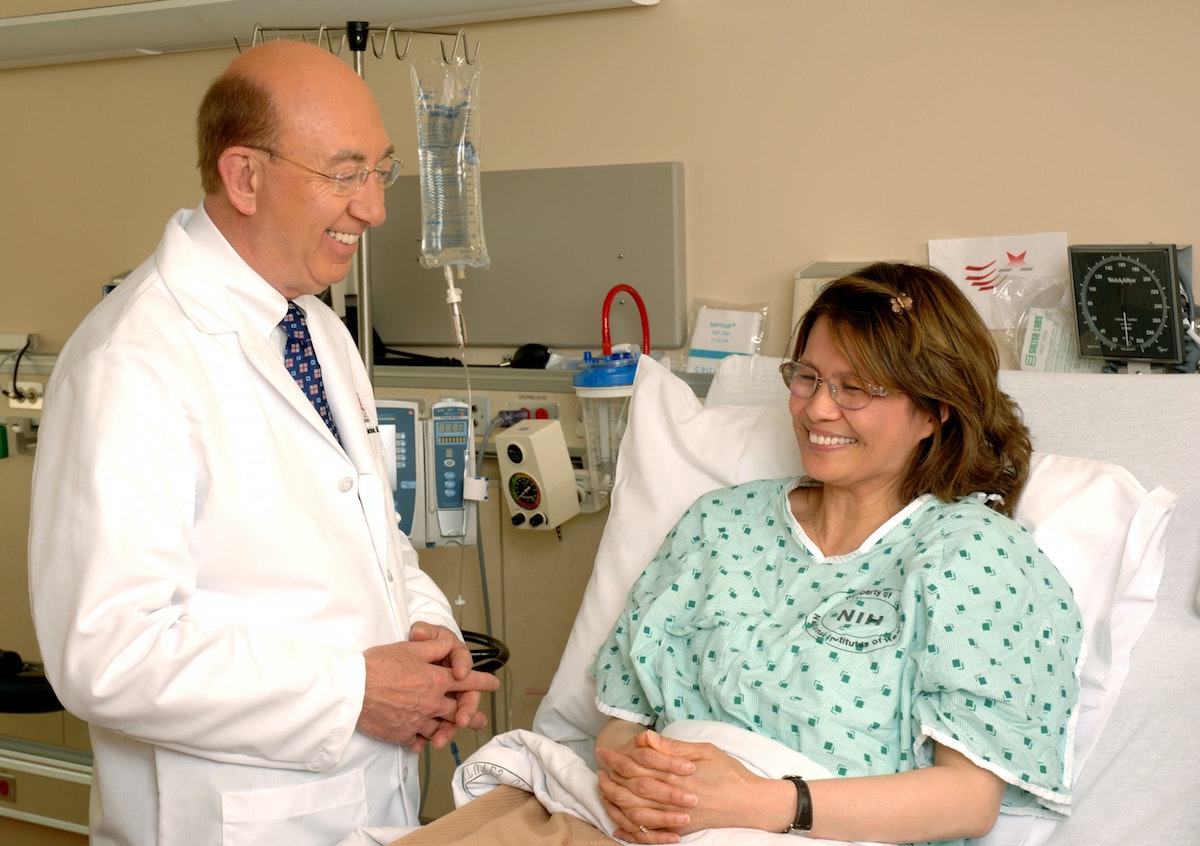On TV, doctors always know best. If eight seasons of House taught viewers anything, it was that Gregory House, M.D., was almost always right. Hospital administrators, other doctors, and, most importantly, patients were almost always wrong. Patients who dared question his diagnoses and treatment were often ridiculed. The most strong-willed were quickly brought to bear when his unconventional methods saved their life.
It’s not just House. From 1961’s Dr. James Kildare to The Good Doctor’s Shaun Murphy today, doctors are wise oracles. Patients are passive plot points.
Few gulfs are as large as the one between make-believe doctor-patient relationships and real life. Instead of discouraging shared decision making (“SDM”), modern medical practices should embrace it. They have good reason to do so. Numerous studies show that actively involved patients have better outcomes. One looked at women diagnosed with breast cancer. It found those who participated the most in choosing their treatment not only improved their quality of life but had more energy following surgery than the women who were more passive.
It makes sense that active patient involvement leads to better outcomes. After all, you will be more likely to support and stick with a course of treatment you fully understand and helped choose. How can you be your best advocate? If you are someone who never returns a poorly prepared restaurant meal, how can you speak up about something so much more important? The good news is that there are already tools available to help you.
The Share Model
The myth of the omniscient doctor really is a myth. Studies going back over 60 years found successful, “modern” doctors involved their patients in treatment decisions. The new century has seen an explosion in studies around shared-decision making. Health care legislation like the 2010 Patient Protection and Affordable Care Act (ACA) incentivized health care providers to use shared decision making. Similar measures in the United Kingdom have enlisted patient representatives to strengthen SDM while in Germany it is part of their social health insurance programs.

As the U.S. Department of Health and Human Services explains, “Shared decision making occurs when a health care provider and a patient (including their family members or caregivers) work together to make a health care decision that is best for the patient.” Although the SHARE approach advocated by HHS is geared toward health care providers, patients can also benefit by learning its tenets.
The SHARE approach encourages conversation between the patient and physicians as they examine together a treatment’s benefits, harms, and risks. Doctors start out by Seeking their patients’ participation. They Help the patient explore and compare treatment options before Assessing their patient’s preferences and values. The doctor then Reaches a decision with the patient and Evaluates it. If you feel your health care provider is not involving you in decision making, discussing the SHARE approach is a great place to start.
Unfortunately, despite evidence that it saves money and time and improves patient-outcomes, SDM is far from universal. In fact, surveys suggest less than 20% of clinical practices are actively using SDM. Given the multitude of treatment options and their differential impact on both condition-specific outcomes and quality of life, breast cancer patients provide an especially troubling and illustrative example.

Taking charge
Over 250,000 women in the U.S. alone are diagnosed each year with breast cancer. They face a range of treatment options. Studies suggest over 70% want to share in this decision, yet far fewer are able to. Women with early-stage breast cancer often overestimate their risk of recurrence. This motivates them to choose the most drastic option available. After a test comes back positive for cancer, the gut reaction is to remove it immediately. This is why information about the recurrence risk should be evaluated, thoroughly explained, and shared with the patient to inform their ultimate decision on the right treatment option for their individual case and situation. Evaluation of patient-specific recurrence risk may involve some advanced methods, including the use of specialized lab tests to assess tumor genetics. Just as significantly, immediate action is rarely required. In many cases, surgery won’t take place for weeks. This is valuable time to weigh all of the possible options including lumpectomy, chemotherapy, and endocrine therapy.
New tech offers new approaches. From novel mobile apps to online video libraries, decision aids allow patients another way to make an informed decision. But these are only helpful if your doctor is also aware of and using them. If your doctor is advocating for a particular course of treatment, ask why. In fact, asking questions and getting information about risks is a great way to start. No matter how difficult it may be, remember you really are your own best advocate.
Written by John Bankston
References
- Do patients benefit from participating in medical decision making? Longitudinal follow‐up of women with breast cancer
- Dimensions of being modern in medical practice
- U.S. Department of Health and Human Services: The SHARE approach
- Twelve myths about shared decision making
- How can we best respect patient autonomy in breast cancer treatment decisions?